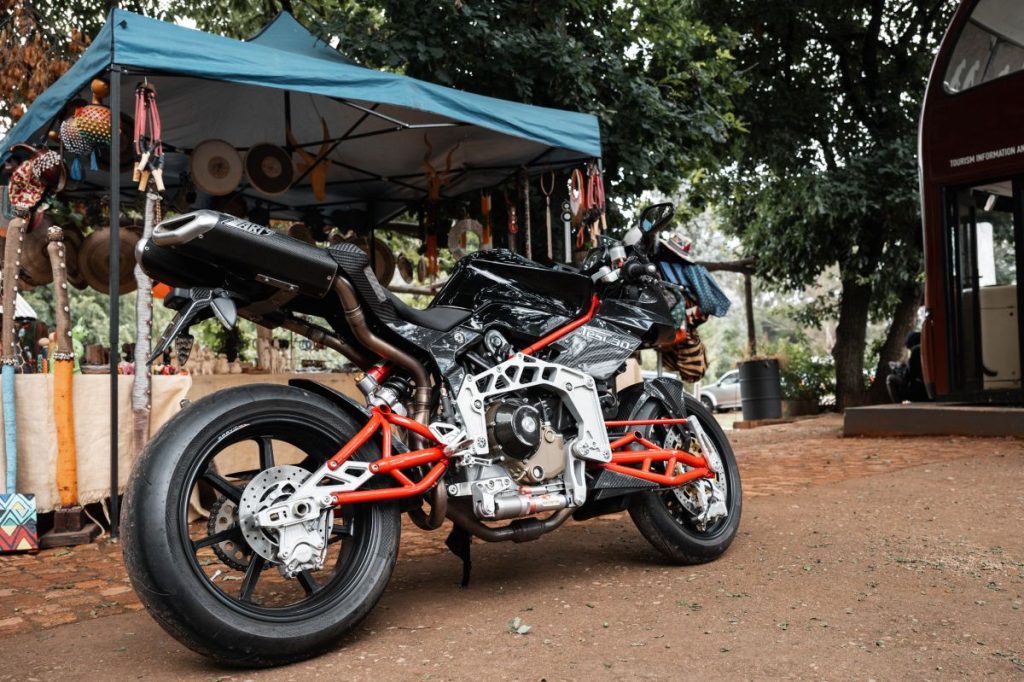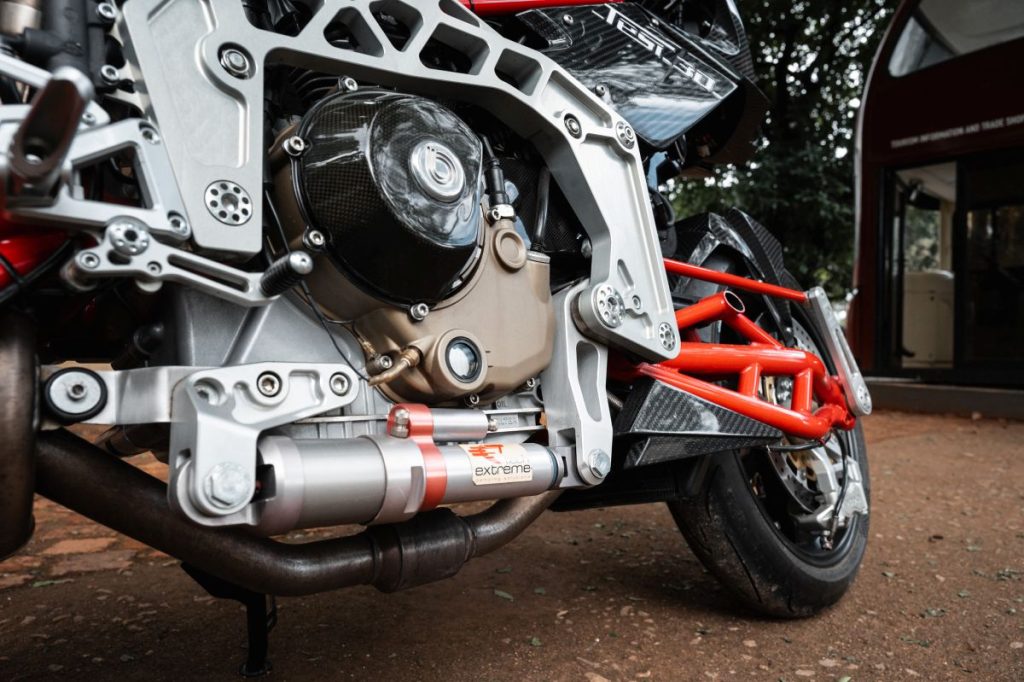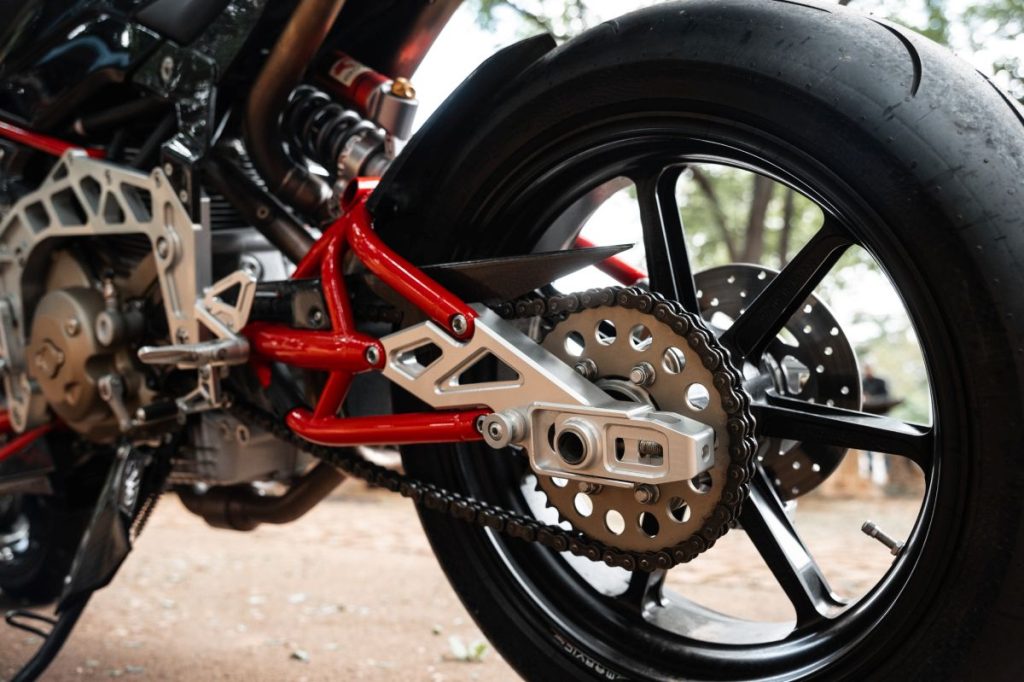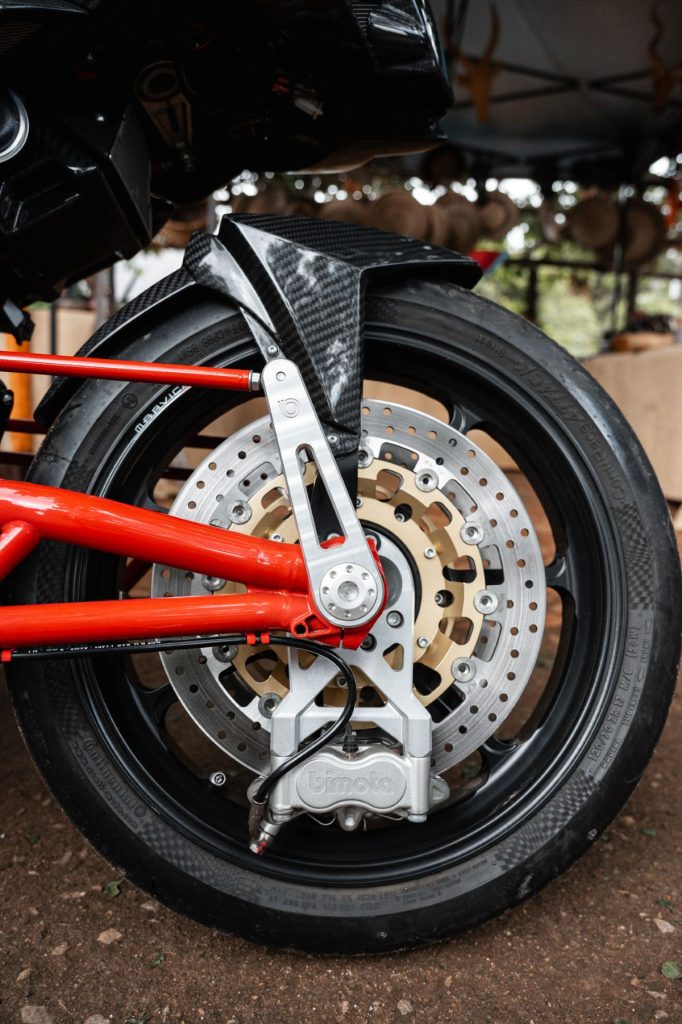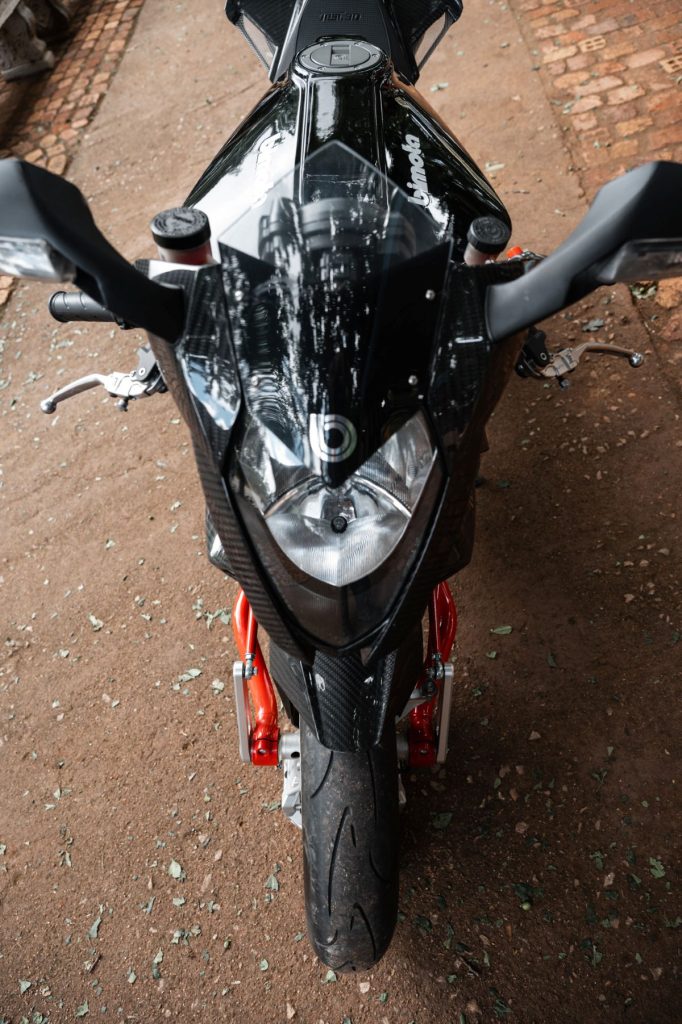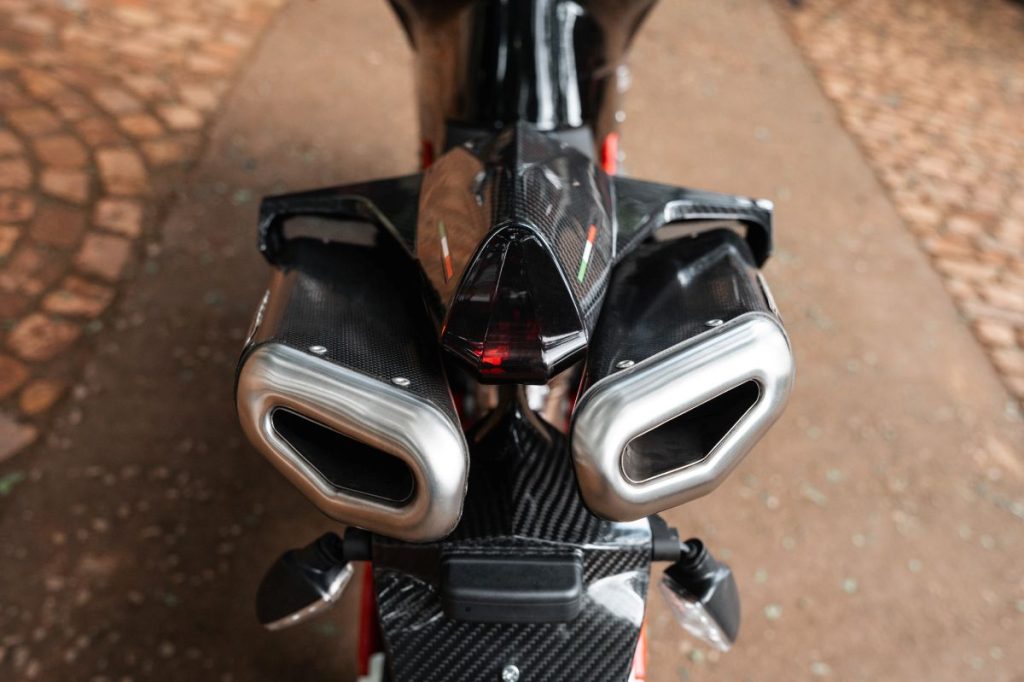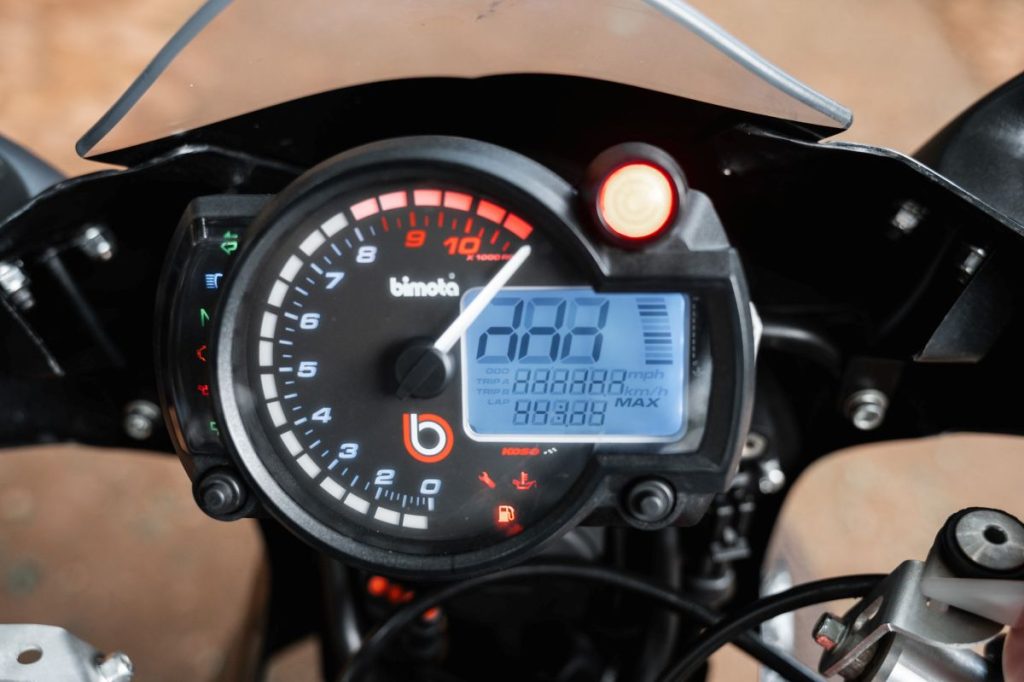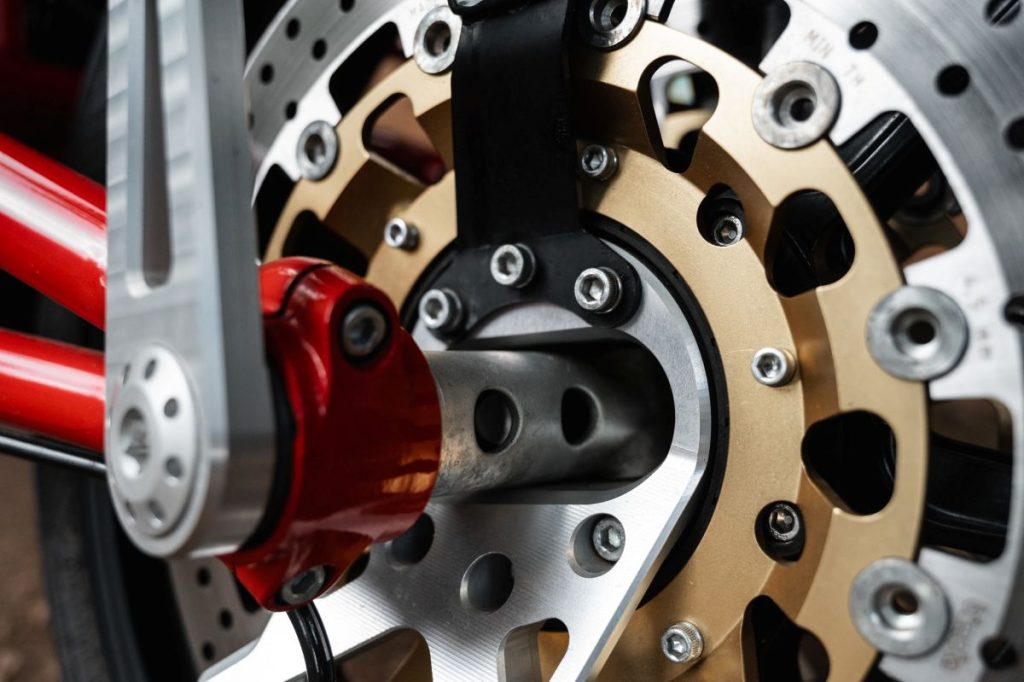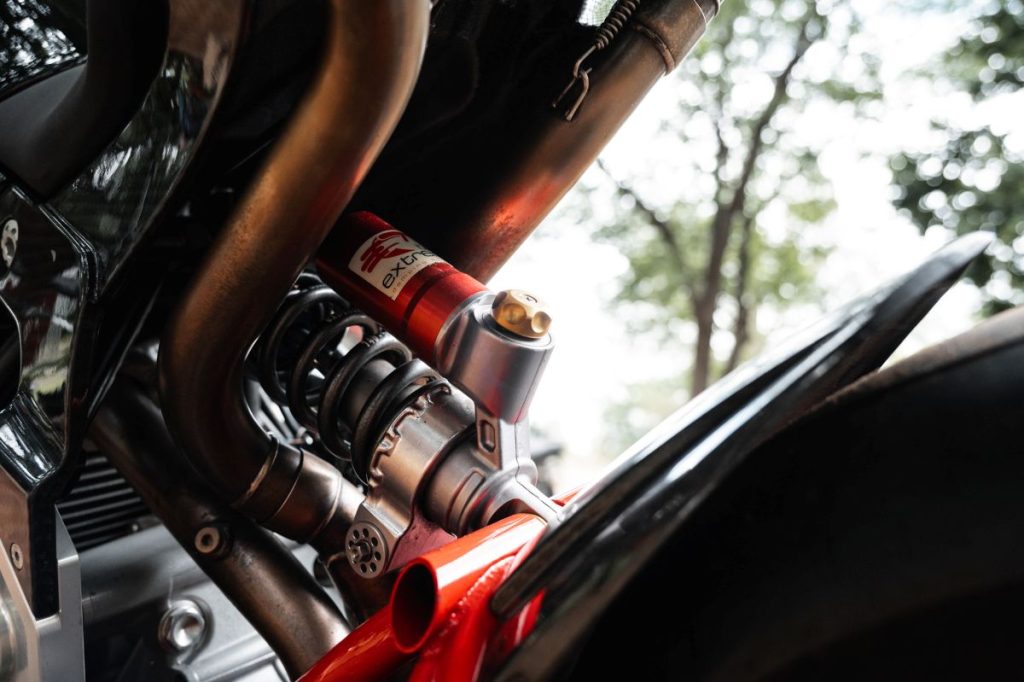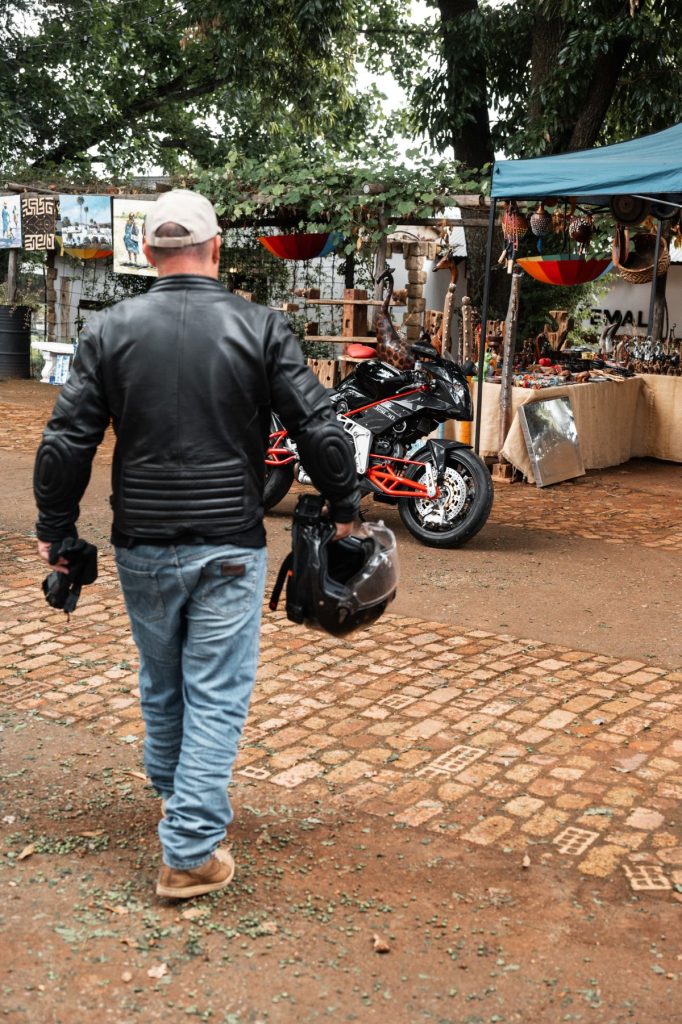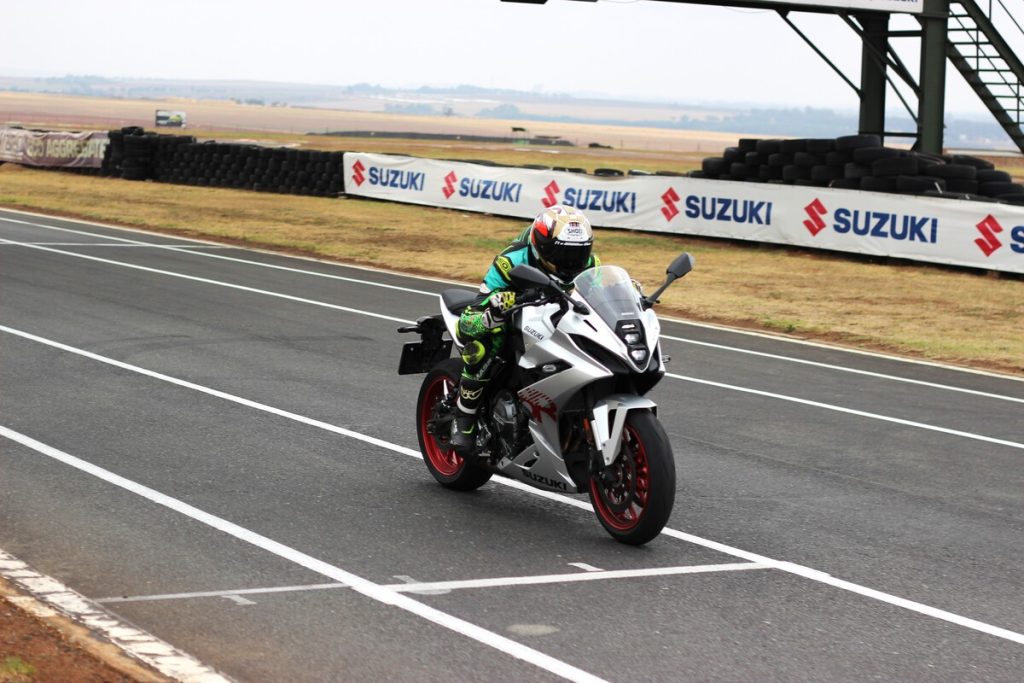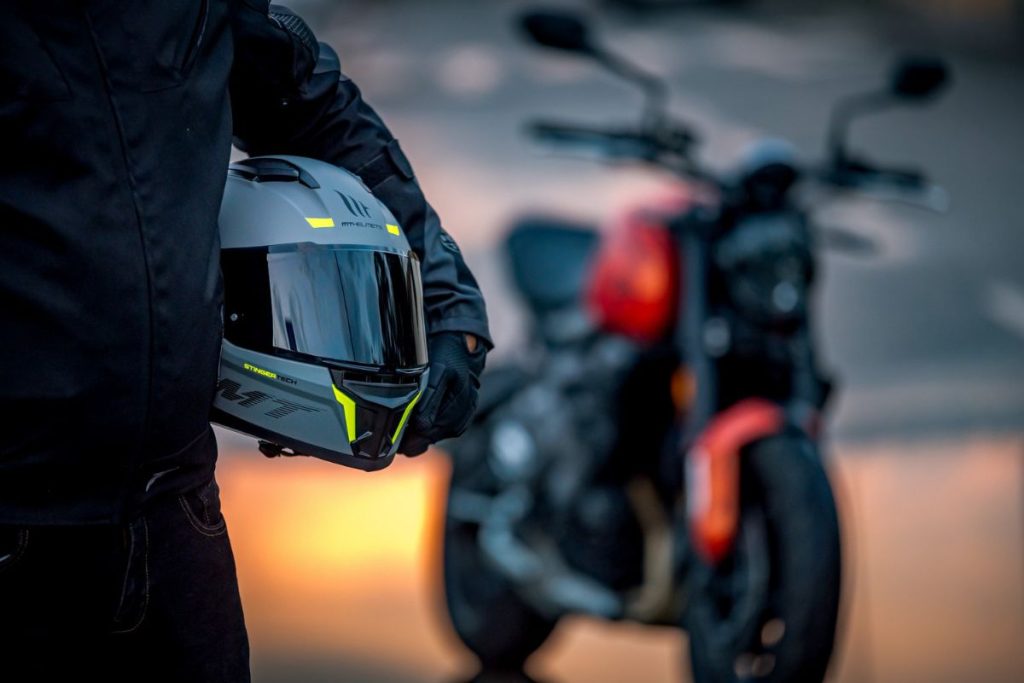By Glenn Foley. Pics: Black Rock Studio
We first noticed this peculiar motorcycle lurking on the showroom floor at Bikeshop Rivonia a few months ago. It piqued our curiosity. We bet it’s piqued yours too. Well, quite amazingly, the owner of the bike agreed to allow us a spin…
But what the heck is it? What’s with all the wierd engineering? Who made it and most importantly… Why?
Here’s what we found out.
Bimota is an Italian motorcycle manufacturer, founded in 1973 by Bianchi, Morri and Tamburini. The name of the company is made up of the first two letters of their names, BI-from Bianchi, MO-from Morri and TA-from Tamburini. Their first notable motorcycle was the SB2, powered by a Suzuki GS750 motor, basically a high-quality, “tricked out” GS750.
Bimota first experienced international racing success in 1980 when SA’s Jon Ekerold, a privateer, won the 350cc world championship on a Yamaha-powered Bimota.
They built this bike, the Tesi 3D Carbonio in 2008 before the company was bought out by Japanese giant, Kawasaki..
Who would have thought of adding a swingarm both at the rear and at the front of a motorcycle?
The Bimota Tesi 3D is a hub-steered motorcycle for the technologically and mechanically minded people out there.Telescopic forks that you find on most road motorcycles, combines both steering and suspension, meaning that any movement of one affects the other.
This design completely separates the two functions.
In a nutshell:
The front and rear swingarms are connected by an omega-shaped frame. The wheel hub houses two tapered bearings and an axle, which is connected via a linkage system to a small steering column located against the frame on the left side of the bike. Another linkage connects this column to the lower triple clamp and clip-on handlebars.
The frame itself is reduced to those two shiny side plates and two subframes—one at the front to support the fuel tank and handlebars, and one at the rear for the seat unit—resulting in significant weight savings. However, as you can well imagine, there are lots of fiddly parts that drive the costs up on a bike like this.
You’ve also seen the system in the Italjet scoots. Cool huh!
Powering the bike is that gorgeous 90hp Ducati 1,078cc air-cooled, Desmodromic L-twin engine from the late 2000s thats mated to Bimota’s own airbox, titanium exhaust system, ECU and fuel-injection.
This special edition boasts carbon-fibre parts, and a Carbon Black finish, that contrast beautifully with the Racing Red finish found on its trellis frame and swingarms.
The Italians sure know how to turn motorcycles into art.
So – whats it like to ride?
Full disclosure. The owner asked us to please take it easy.
Ummm well, the bike is priced at half a mil, so we did exactly that. We all converged on Bidon Bistro in The Cradle and proceeded to scare the daylights out of the cyclists. No seriously, more than a few wandered across just to stare, this bike is absolutely a head turner.
The bike is low slung, not overly tall. The clubmans are low. The whole bike feels and is… really narrow. Tickle the starter and that air cooled Ducati engine takes a few turns to start rumbling… you can watch as the dry clutch spins creating that signature air-cooled clatter and from there – it’s a bit like riding an earthquake really.
It’s glorious!
We expected a Ducati clutch from the days of old – stiff and much PT on the fingers… Nope this one’s as soft as any current bike. The big V Engine doesn’t quite produce the power of a current generation twin, but it delivers about a tonne of personality and more than enough grunt to make sure that you have a grin firmly plastered on your kisser as you shuffle through the six-speed gearbox.
Quick shifter? Nope.
Rider modes? Nope.
ABS? Well – no, but it does have enormous twin pot Brembo brakes front and rear that worked perfectly for the duration.
More streetfighter than superbike, we were amazed at just how, well, normal it feels.
The feeling when you brake hard is different – more like a pivot than a dive. Feeback from bumps and potholes are tranferred through the seat, rather than the handlebars, and turning while at a standstill is very slightly stiffer than on a conventional motorcycle.
It might look peculiar, but they absolutely do know what they were up to. We also all agree that they chose a perfect engine to set the wheels in motion.
We spent a few glorious hours in the saddle. A bike like this just does that. It’s really something quite special. The centre of attention – and deservedly so.
Pop on down to Bikeshop Rivonia and have a look.
A rare bike like this is quite something to behold…



